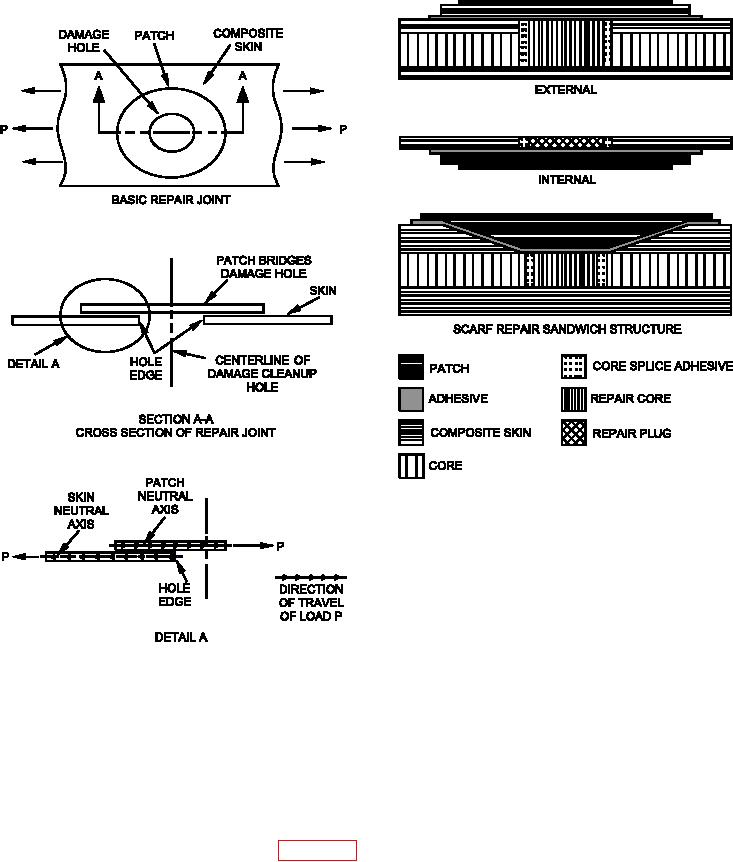
TM 1-1500-204-23-11
Figure 6-15. Basic Repair Joints (Bonded)
(1) External Bonded Patch. The
external
bonded patch is the easiest bonded repair joint to
fabricate. Adhesive bondline area for load transfer
is provided by overlapping the repair patch and the
part skin. One of the limiting factors for this type of
joint is the eccentric load path caused by the offset
of patch and part neutral axes due to the overlap.
This eccentricity can result in interlaminar failure of
the patch or part skin, or premature failure of the
Figure 6-14. Basic Repair Joints (General)
adhesive. Another limiting factor in the use of an
external bonded patch is the stress concentration
c. Bonded Joints. Bonded joints make use of a
that exists at the edge of the patch and the edge
repair patch to carry load across the damaged region.
of the damage cleanup hole in the part skin. This
A common misconception is that the adhesive is
stress concentration can be reduced at the edge of
applied to hold the patch in place on the part. While
the patch by gradually increasing the thickness at its
that is one function of the adhesive, the primary
edge (by stepping or tapering the edge of the patch)
function is to transfer load from the undamaged part
to "ease" the load into the repair joint, but the stress
to the patch. Load transfer is accomplished via
concentration at the hole edge remains and limits the
shearing action in the adhesive. Three commonly
load carrying capability of the external bonded patch.
used bonded repair joints are shown in igure 6-15.
Only those bonded repair joints and patch/adhesive
(2) Internal Bonded Patch. The internal bond-
materials speciied in either a system speciic technical
ed patch is similar to the external bonded patch and
manual or by engineering shall be used for repair.
has the same limiting factors. However, the internal
bonded patch is very dificult to incorporate without
backside access and virtually impossible on honey-
comb sandwich parts due to interference with the

